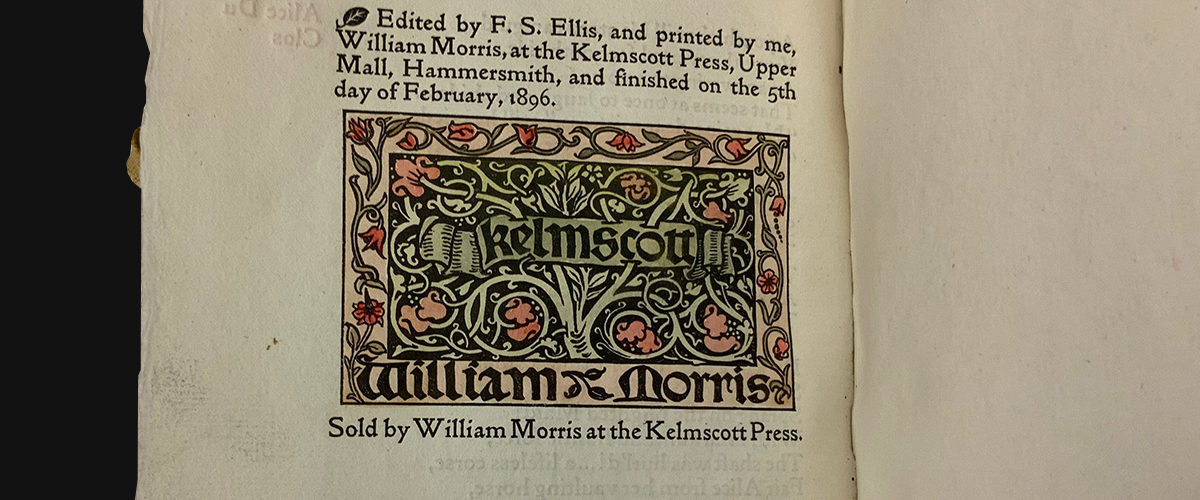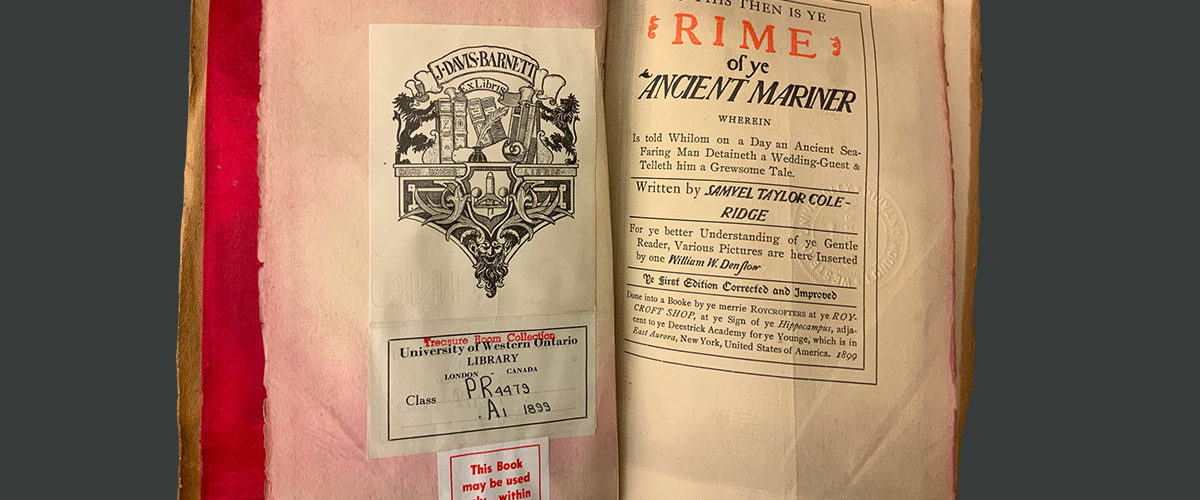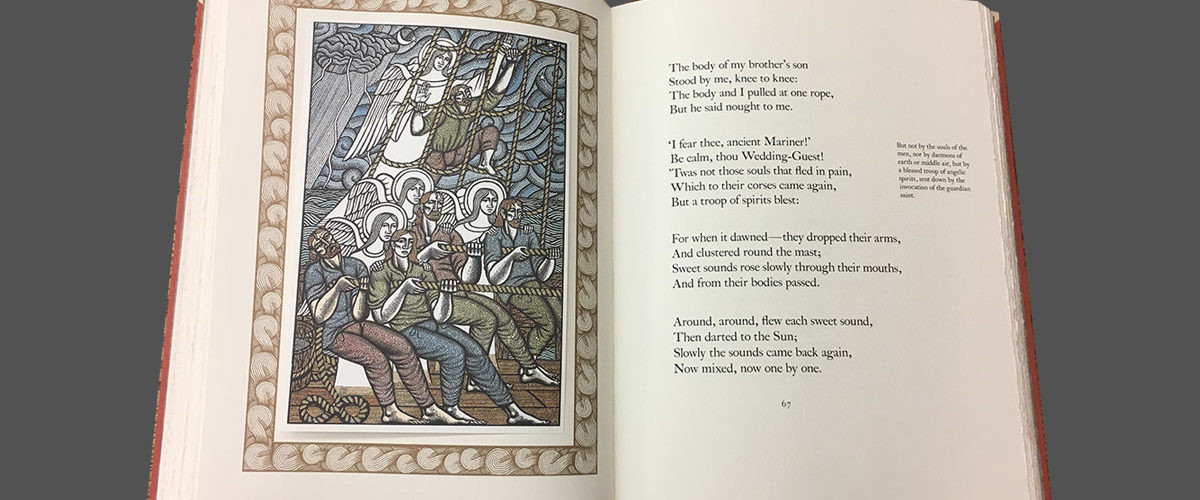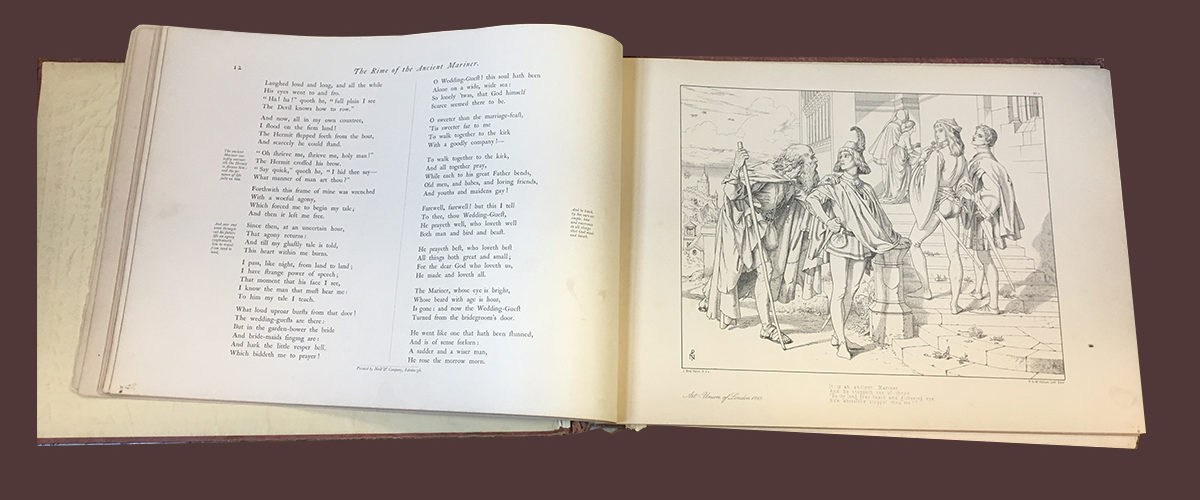A sample from our image archive. Each image in our gallery highlights the important material features and bibliographic details of various editions of Coleridge’s poem.
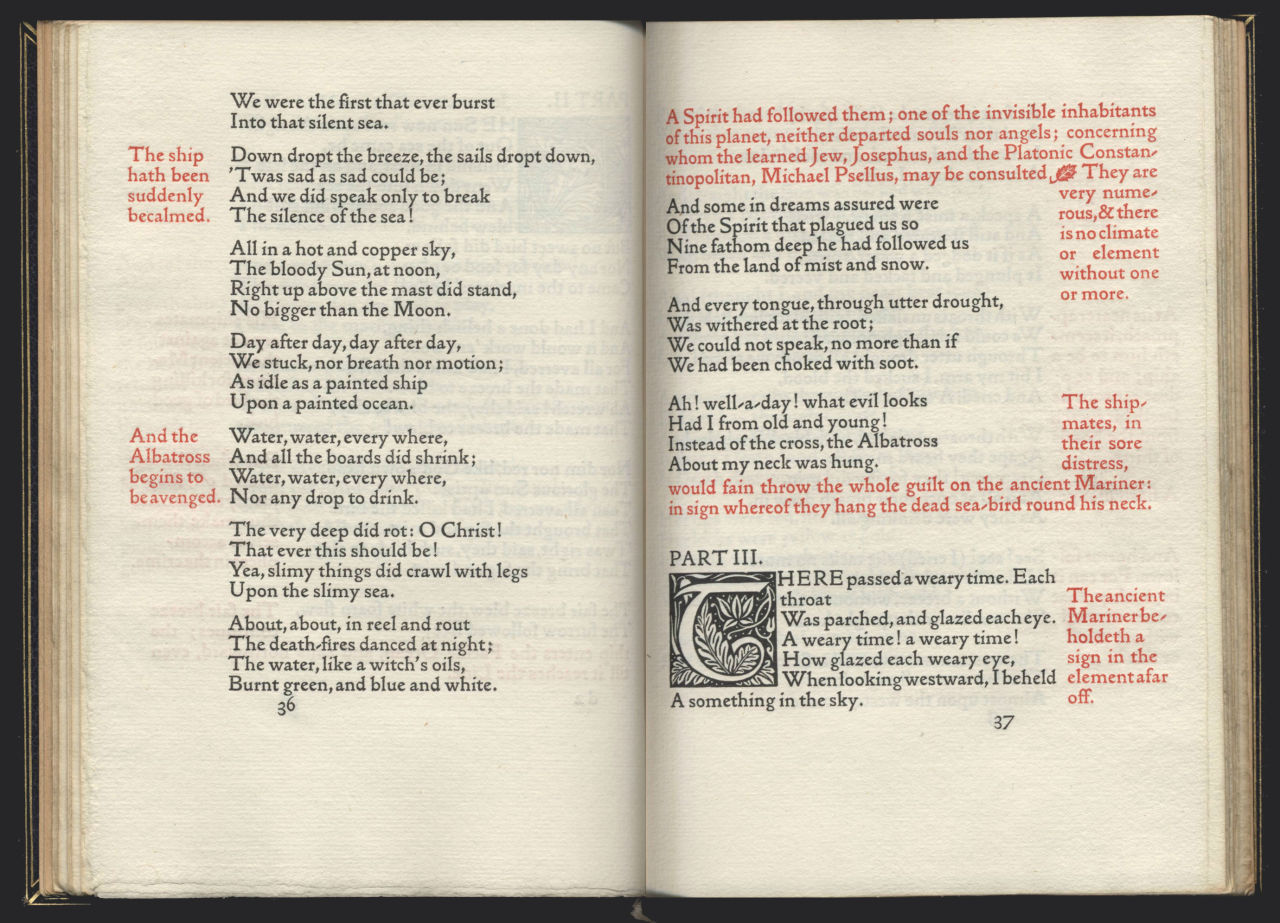
William Morris' attention to the importance of quality paper is evident in each of the books printed by the Kelmscott Press. Morris' books were printed on handmade linen paper that was meant to mimic the material qualities of paper used in Renaissance printing. The paper was crafted by the Kent-based papermaker, Joseph Batchelor.
This book is set in "Golden Type," the typeface that William Morris designed for use in his Kelmscott Press. Morris' typeface takes its inspiration from the the letterforms of fonts designed by the printer Nicolas Jansen in the 15th century. Morris's new set of type, which evokes the design of both blackletter script and Renaissance humanist typefaces, sought to counter the "Didone" typefaces used in the mass printing of books in the 19th century.
A woodblock "T" ornament designed by William Morris. Illustrative elements are ubiquitous in Kelmscott Press books. Each letter in the alphabet had many different woodblock variations that Morris used throughout the printing of his volumes. The T, for example, had 34 variants.
About “The Digital Rime”
Born in 1772, Samuel Taylor Coleridge has been praised as one of the literary intellectuals of his era, and was a significant character in the development of the Romantic movement. Coleridge worked as a journalist and lecturer in Bristol, and lectured on various topics including politics, religion, and history. Beginning in 1797, Coleridge and William Wordsworth began working on Lyrical Ballads which they later published anonymously in 1798. Originally published in Lyrical Ballads, “The Rime of the Ancient Mariner” has been transformed and revised in several subsequent editions, and is one of Coleridge’s most notable and praised works. After its initial release, Coleridge received reviews that expressed a general dislike of the archaic language and complex imagery featured in the poem. The later editions of “The Rime of the Ancient Mariner” were revised to appease Coleridge’s audience; the poet modernized the language and included a gloss that has since garnered conflicting opinions. The purpose of “The Digital Rime” is to allow readers to view all of Coleridge’s revisions and modifications of the poem while also not restraining or imposing a single interpretation of his work on the reader.

